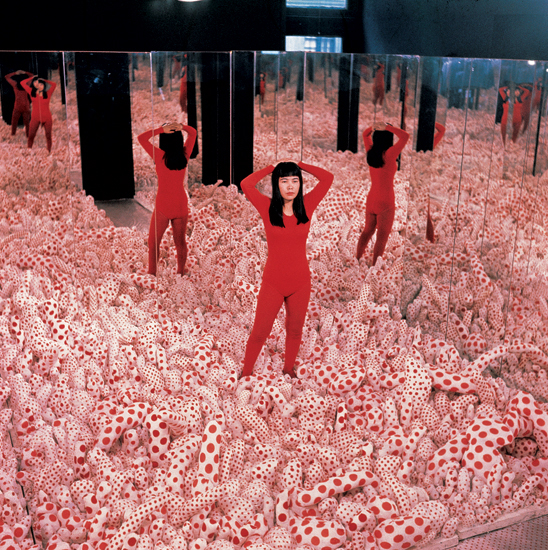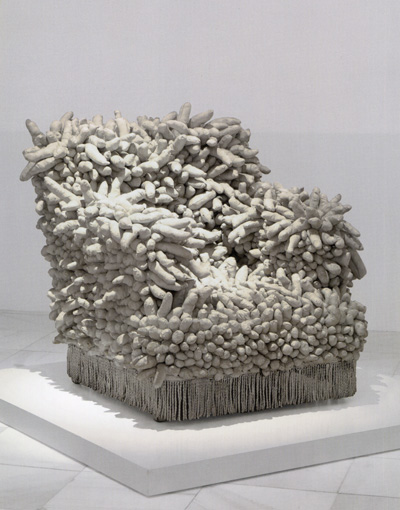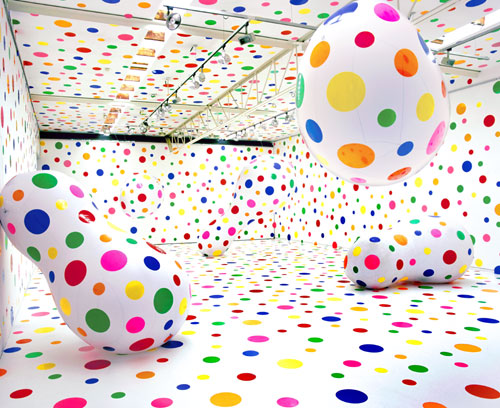It feels strange, and not a little hubristic, to name Eleanor Antin as my "contemporary". At age 78, she is a major, accomplished artist who delves deep into feminism, identity, racism, ethnicity, narrative and more. Antin was breaking all kinds of taboos when I was learning handwriting in elementary school. What's more, she was doing these things when she was just a bit older than I am now.
I suppose I feel more comfortable saying I *aspire* to be something like Eleanor Antin. That she is a big-time source of inspiration at the moment. That she was the person in my head when I was creating my Golem video. (More on that further down.)
When I was in the stacks at Avery, I spent a lot of time looking for a contemporary other than Eleanor Antin. It seemed a little too easy, maybe brown-nosey too, to cite an artist introduced to me on the second day of class. Try as I might, I couldn't get her out of my head. Every book I paged through left me wanting to track down the single book on Antin owned by Avery, which another student clearly had a lock on: I never got my hands on it.
So I returned to Emily Liebert's exhibition at the Wallach and took these three pictures (among many others), one from the King series, one from "The Nurse and the Hijackers" series, and one from the most obviously Jewish piece, the film made by the make-believe Jewish émigré Yevgeny Antinov.
In my two viewings of the exhibition, and also the "Art21" episode on Antin, I am struck by how much I have in common with her (again, this feels like a hubristic and strange thing to write): Jewish, feminist, storyteller, politically concerned. Like Antin, I am interested in work that is autobiographical, funny, outrageous, theatrical, crude in aesthetic; work that comments on present-day situations in a way in which hardcore beliefs come across with humor and way more subtlety than a sledgehammer.
Unlike me: Antin can really draw. She has the chutzpah to take on race. She lives in Southern California whereas I only *fantasize* about going West (sigh).
[More after the jump.]
I had never considering making a video until I saw Antin's decidedly lo-tech "The Nurse and the Hijackers" of 1979. Among other things, it demonstrated that my kitchen could work just fine as a studio and my props could be made entirely from art supplies I happened to have around the house. Moreover, the unambiguous presence of Antin (see her hand, lower right) gave me permission to do the same when my own paper dolls needed to move or speak. I am struck by the extent of the impact of that viewing. Now I am considering a video class next semester, as it appears to be an ideal narrative form for me. [More after the jump.]

In the Art21 segment, Antin observes that she tends to see the funny side of things. So do I. She relates this trait to her Judaism. I don't know if I would go that far with it, but I identify strongly as a secular Jew and this informs my creative process, my perspective, the voices in my head (so relieved to have permission to admit to their presence -- thanks, Mary and Michael Berryhill!). In my writing I tend to Jewish humor, and I am attracted to Antin's parody film of shtetl life, as that was the life of my grandmother and other relatives, and therefore crucial to my history.
Since reading Giorgio Agaman's piece, "What Is the Contemporary?," I have been thinking of his quotation of Nietzsche, that relevance comes from "disconnection, an out-of-jointness" with one's epoch. I am not sure whether that is true, or whether I believe it. But let's say for a moment that it is. To me, Antin's work appears echt-'70s -- political, feminist, muscular, always keeping it real. Before reading Agaman, I would have assumed the same for her personally. Agaman would disagree. On November 9, I am going to see for myself, when Antin speaks at the Wallach Gallery. At this point, my guess is that she is a person who knows how to move with the times -- perhaps while being not quite "of" them -- as she keeps a keen eye on her surroundings. To me, that is the definition not only of an artist but also of youthfulness. And maybe contemporariness.


















































